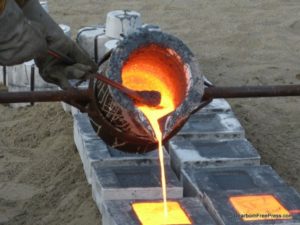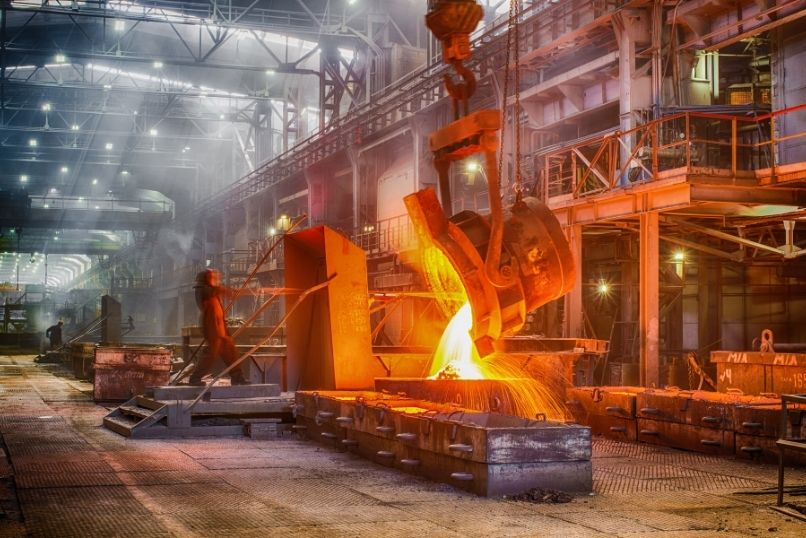A closer look at Aluminum Foundry processes and their remarkable casting results
Wiki Article
A Deep Dive Into the Different Sorts Of Metal Casting and Their Uses
Metal Casting encompasses different methods, each customized for particular applications and requirements. From the cost-effective sand casting method to the precision of financial investment spreading, each process has distinct advantages. Pass away casting sticks out in high-volume production scenarios, while shed foam casting introduces innovative style opportunities. In addition, permanent mold and mildew casting is recognized for its resilience. Recognizing these approaches opens a window into their useful uses and ramifications in various sectors. What lies beneath the surface area of these spreading strategies?Sand Casting: A Flexible and Cost-efficient Approach
Numerous casting techniques exist, sand spreading continues to be one of the most economical and flexible techniques in the metalworking sector. This method uses a mixture of sand and a binding representative to develop mold and mildews, enabling for the production of parts in varied dimensions and forms. Sand casting is particularly useful for small to tool manufacturing runs, as it requires very little in advance investment in tooling compared to various other casting techniques.The procedure starts with the production of a mold and mildew, where molten steel is put in to create the preferred things as soon as cooled. Its adaptability makes it possible for using different steels, including light weight aluminum, steel, and iron. Additionally, sand casting can accommodate complex geometries, making it suitable for a variety of applications, from automotive components to complex imaginative items. Overall, sand casting's efficiency and flexibility solidify its relevance in the manufacturing landscape.
Financial Investment Casting: Accuracy and Information for Complex Shapes
Investment casting attracts attention as a method renowned for its capability to produce very described and detailed elements. This procedure includes creating a wax pattern that is covered with a ceramic shell, which is after that heated up to get rid of the wax and harden the shell. The outcome is an exact mold that can record complex geometrical shapes with impressive accuracy.This spreading method is specifically beneficial for generating get rid of slim walls, fine features, and tight resistances, making it optimal for sectors such as aerospace, auto, and clinical devices. Investment spreading fits a selection of steels, including stainless-steel, light weight aluminum, and titanium, allowing makers to satisfy specific product requirements.
The procedure reduces machining demands post-casting, which can boost performance and minimize production expenses. On the whole, financial investment casting is a preferred choice for applications where precision and information are vital.
Die Spreading: High-Volume Production With Excellent Surface Area Complete

Die spreading is an extremely efficient manufacturing procedure that masters producing big quantities of metal get rid of outstanding surface finishes. This technique includes requiring liquified metal right into a mold tooth cavity under high stress, enabling fast manufacturing cycles and uniformity in the finished items. Generally made use of materials include zinc, light weight aluminum, and magnesium, which offer exceptional mechanical properties and corrosion resistance.
Pass away spreading is specifically useful for industries such as automotive, electronic devices, and consumer items, where precision and high quality are vital. The process makes it possible for elaborate layouts, minimizing the requirement for extra machining and finishing processes. Furthermore, the smooth surface areas produced with die spreading typically need very little post-processing, leading to reduced total manufacturing costs. As a high-volume production technique, die casting is excellent for makers seeking efficiency without jeopardizing on high quality, making it a preferred option for countless applications throughout different sectors.
Lost Foam Casting: Innovative Approach for Intricate Designs
Lost foam casting revolutionizes the production of intricate metal components by using a special process that eliminates the need for Wisconsin Aluminum Foundry conventional mold and mildews. Instead of conventional mold-making, this method utilizes a foam pattern that is covered with a refractory material. Once the pattern is established, molten steel is put directly right into the mold, triggering the foam to leave and vaporize behind a precise tooth cavity for the metal to fill up. This ingenious technique enables complex styles and detailed functions that might be testing to accomplish with other casting techniques.Furthermore, shed foam casting can minimize waste and energy usage, making it an ecologically friendly option. Industries such as aerospace and automotive benefit greatly from this strategy, as it supports the creation of lightweight parts with complicated geometries. On the whole, lost foam casting stands out for its capacity to supply premium, personalized metal components efficiently.
Permanent Mold Spreading: Durability and Uniformity in Metal Parts
Irreversible mold spreading is a very reliable approach for generating resilient and regular steel parts, leveraging reusable molds that are normally made from steels such as iron or steel. This casting procedure includes putting liquified metal right into these molds, which are preheated to improve product quality and lower problems. Making use of recyclable mold and mildews not just reduces waste yet likewise enables higher production prices, making it economically helpful for manufacturers.The resulting parts show superb dimensional accuracy and surface area coating, making them excellent for applications in vehicle, aerospace, and commercial machinery. Additionally, irreversible mold casting can suit a variety of alloys, even more broadening its versatility. The sturdiness of the actors components is improved due to the controlled cooling prices that promote better grain frameworks. Generally, this casting technique stands apart for its ability to produce premium steel components that fulfill strenuous performance requirements, guaranteeing dependability in requiring atmospheres.
Often Asked Concerns
What Products Can Be Utilized in Various Metal Casting Procedures?

Various materials can be used in Metal Casting procedures, including aluminum, zinc, bronze, and iron. Each material offers unique buildings, affecting the casting approach's effectiveness, strength, and suitability for different applications in manufacturing.
Just How Do Casting Approaches Impact the Mechanical Residences of Metals?
Casting methods considerably influence the mechanical buildings of metals, impacting aspects like hardness, toughness, and ductility. Variants in cooling prices and mold materials can bring about various microstructures, ultimately influencing the efficiency of the final product.What Are the Environmental Impacts of Steel Casting Procedures?
Metal Casting processes can lead to air and water contamination, source deficiency, and substantial energy intake (Metal Castings). Additionally, the generation of waste products and greenhouse gas emissions substantially adds and affects the environment to environment adjustmentHow Do You Choose the Right Casting Technique for a Job?
Picking the appropriate spreading approach includes reviewing job needs, material residential or commercial properties, complexity, and production volume. Elements like expense performance, coating top quality, and preparation likewise play important roles in establishing the most appropriate method.What Security Safety Measures Should Be Taken During Metal Casting Operations?
During Metal Casting procedures, safety and security preventative measures consist of wearing protective equipment, making sure correct air flow, conducting tools assessments, preserving a clean work space, and having emergency methods in area to manage possible dangers like burns or hazardous fumes.From the cost-efficient sand spreading approach to the accuracy of investment spreading, each process has unique benefits. Die casting is a very effective manufacturing procedure that excels in generating large quantities of metal components with phenomenal surface coatings. Lost foam casting changes the production of intricate metal components by utilizing an one-of-a-kind process that eliminates the need for standard molds (Metal Castings). Long-term mold spreading is a highly efficient method for generating sturdy and consistent metal components, leveraging multiple-use mold and mildews that are generally made from steels such as iron or steel. Various materials can be made use of in Metal Casting procedures, including aluminum, zinc, bronze, and iron
Report this wiki page